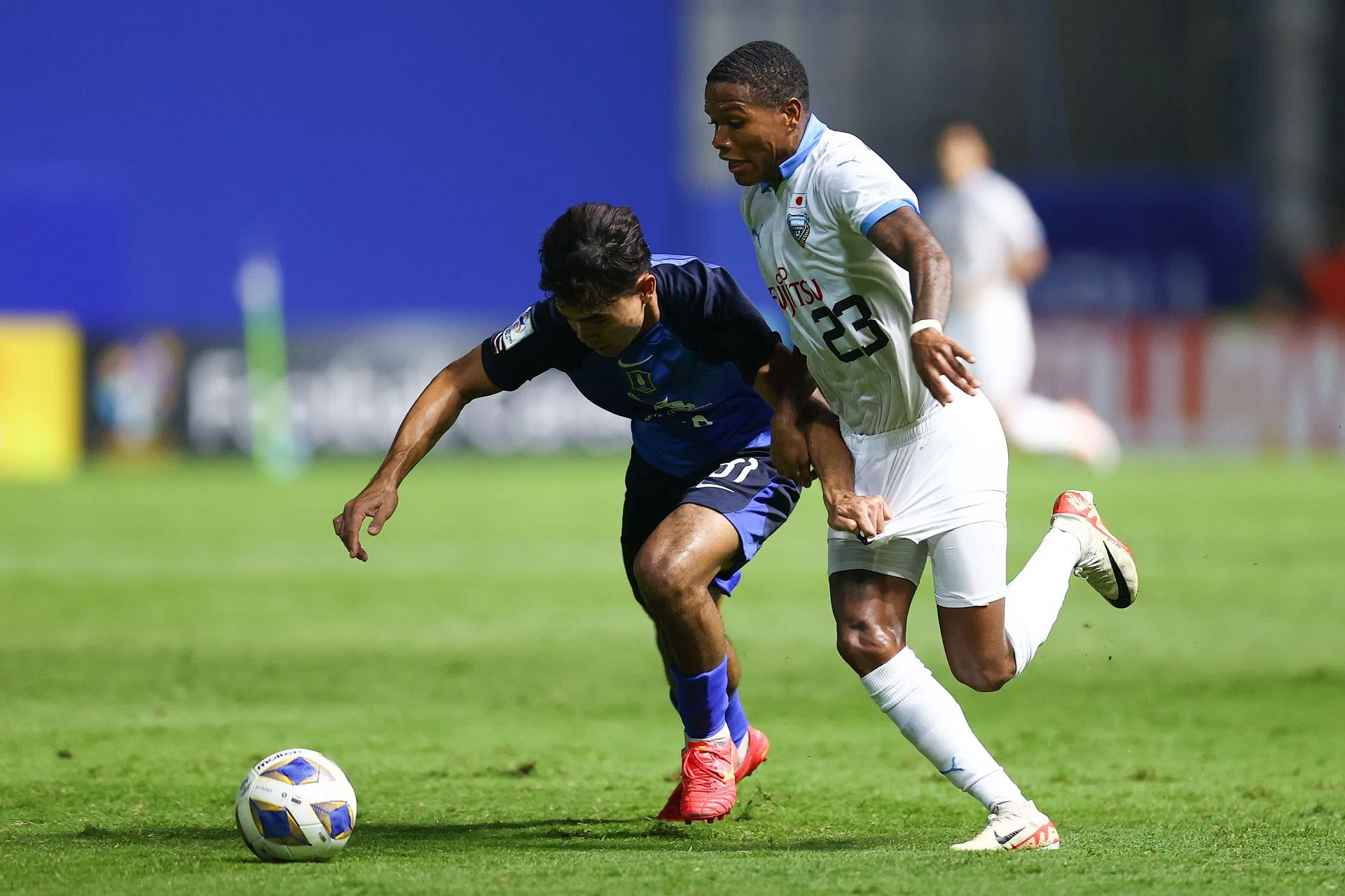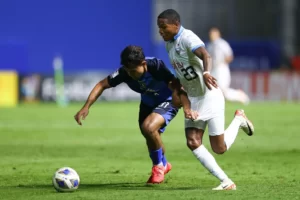Witness the electrifying encounter between Johor Darul Ta’zim F.C. and Kawasaki Frontale, two AFC Champions League giants, as they battle for supremacy in this high-stakes match. Discover the teams’ strategies, key players, and the captivating history of their rivalry. Brace yourself for an unforgettable clash of titans…
Introduction
On the grand stage of Asian football, two titans are poised to clash in a match that will electrify the continent: Johor Darul Ta’zim F.C., the pride of Malaysia, and Kawasaki Frontale, the indomitable force of Japan. This encounter, scheduled for November 28th at the Kawasaki Todoroki Stadium, marks a pivotal moment in the AFC Champions League, where both teams seek to assert their dominance and etch their names among the tournament’s legends.
The AFC Champions League, the crown jewel of Asian club football, stands as a testament to the continent’s burgeoning passion for the beautiful game. This prestigious tournament, contested by the top clubs from across Asia, showcases the finest talent, the most tactical brilliance, and the fiercest rivalries.
Johor Darul Ta’zim F.C., affectionately known as JDT, has emerged as a powerhouse in Malaysian football, capturing nine consecutive Malaysia Super League titles and establishing themselves as a formidable force in Southeast Asia. Their journey to the AFC Champions League has been nothing short of remarkable, defying expectations and overcoming formidable opponents.
On the other hand, Kawasaki Frontale, the reigning champions of the J1 League in Japan, have established themselves as a force to be reckoned with in East Asia. Their possession-based style of play, coupled with their tactical prowess and individual brilliance, has earned them a reputation as one of Asia’s most formidable clubs. Their path to the AFC Champions League has been marked by consistency and dominance, showcasing their unwavering determination to excel on the continental stage.
The upcoming clash between Johor Darul Ta’zim F.C. and Kawasaki Frontale promises to be an unforgettable spectacle, a battle of titans that will captivate fans worldwide. As the two teams prepare to lock horns, anticipation reaches a fever pitch, and the stage is set for an encounter that will redefine the landscape of Asian football.
Team Analysis: Johor Darul Ta’zim F.C.
Johor Darul Ta’zim F.C., the pride of Malaysian football, has established themselves as a dominant force in Southeast Asia, captivating fans with their attacking flair and tactical prowess. Their success stems from a combination of individual brilliance, a cohesive team spirit, and a tactical approach that emphasizes control and creativity.
Strengths and Playing Style:
JDT employs a dynamic and attacking 4-3-3 formation, favoring a possession-based style that emphasizes short passes, quick transitions, and incisive attacking moves. Their strength lies in their ability to orchestrate intricate passing patterns, penetrate defenses, and create scoring opportunities through a combination of individual skill and well-rehearsed set pieces.
Key Players and Contributions:
The team’s success is spearheaded by a core group of talented individuals, each contributing their unique skills to the team’s overall performance.
Hariss Harun: The midfield maestro, Harun orchestrates JDT’s attacks with his vision, passing range, and ability to control the tempo of the game.
Safiq Rahim: A veteran leader with a knack for scoring crucial goals, Rahim provides experience and composure in midfield, while his set-piece delivery is a potent weapon.
Bergson da Silva: The team’s lethal striker, da Silva possesses exceptional dribbling skills, a clinical finishing touch, and the ability to create chances for his teammates.
Recent Performances and Tactical Approach:
JDT’s recent performances have showcased their tactical adaptability and ability to overcome different opponents. In the Malaysia Super League, they have maintained their attacking dominance, scoring goals in bunches and controlling possession in most games. In the AFC Champions League, they have demonstrated their resilience, adapting their tactics to face stronger opposition from East Asia.
Their tactical approach emphasizes quick transitions from defense to offense, utilizing their pacey wingers and midfielders to create scoring opportunities. They are also adept at exploiting spaces in behind defenses, with their strikers always ready to pounce on any loose ball.
JDT’s success is a testament to their unwavering commitment to attacking football, their tactical flexibility, and their ability to adapt to different opponents. As they prepare to face Kawasaki Frontale, they will need to be at their best to overcome the Japanese champions’ formidable defense and possession-based style of play.
Team Analysis: Kawasaki Frontale
Kawasaki Frontale, the reigning champions of the J1 League in Japan, have established themselves as a force to be reckoned with in Asian football. Their possession-based style of play, coupled with their tactical prowess and individual brilliance, has earned them a reputation as one of Asia’s most formidable clubs.
Strengths and Playing Style:
Kawasaki Frontale’s success is built upon their unwavering commitment to possession-based football. Employing a fluid 4-3-3 formation, they aim to control the tempo of the game, dictate the flow of play, and create scoring opportunities through a combination of short passes, quick transitions, and intricate passing patterns. Their strength lies in their ability to retain possession, move the ball with precision, and find spaces in behind defenses.
Key Players and Impact:
Kawasaki Frontale’s dominance is fueled by a core group of talented individuals who play vital roles in their tactical setup.
Shingo Nakamura: The team’s creative hub, Nakamura orchestrates their attacks with his vision, passing range, and ability to unlock defenses.
Ryota Aoiki: A versatile midfielder with an eye for goal, Aoiki provides attacking threat from midfield, scoring goals and creating chances for his teammates.
Kenji Miyamoto: A solid and experienced defender, Miyamoto marshals Kawasaki Frontale’s defense, organizing the backline and repelling attacks with his aerial prowess and tackling ability.
Recent Performances and Tactical Strategies:
Kawasaki Frontale’s recent performances have showcased their tactical effectiveness and ability to adapt to different opponents. In the J1 League, they have consistently demonstrated their possession-based philosophy, controlling the ball and creating numerous scoring opportunities. In the AFC Champions League, they have displayed their defensive resilience and ability to adapt their tactics against stronger opposition.
Their tactical strategies emphasize high pressing, quick transitions, and exploiting spaces in behind defenses. They are also adept at maintaining possession and creating overloads in midfield to break down opponents’ defenses.
Kawasaki Frontale’s success is a testament to their unwavering commitment to their possession-based philosophy, their tactical flexibility, and their ability to adapt to different opponents. As they prepare to face Johor Darul Ta’zim F.C., they will need to be at their best to overcome the Malaysian champions’ attacking threat and
Head-to-Head History: Unveiling the Rivalry
The rivalry between Johor Darul Ta’zim F.C. (JDT) and Kawasaki Frontale is a relatively new but rapidly intensifying one, with both teams emerging as dominant forces in their respective leagues and establishing themselves as contenders in the AFC Champions League. Their encounters have been marked by tactical battles, individual brilliance, and a growing sense of anticipation among fans.
Past Matches: Memorable Moments and Turning Points
The two teams have met three times, with Kawasaki Frontale holding a slight edge with two wins to JDT’s one draw. Their first encounter took place in the 2022 AFC Champions League group stage, where JDT held their own against the Japanese champions, securing a 0-0 draw.
However, Kawasaki Frontale asserted their dominance in the following two matches, showcasing their tactical prowess and clinical finishing. In the 2023 AFC Champions League group stage, they defeated JDT 5-0 in a commanding performance, highlighting their ability to break down defenses and create scoring opportunities.
Evolving Dynamics and Significance
The rivalry between JDT and Kawasaki Frontale has evolved into a significant one in the AFC Champions League, representing the clash of two distinct footballing styles and philosophies. JDT’s attacking flair and Kawasaki Frontale’s possession-based approach have created a compelling contrast, with each team seeking to impose their style on the other.
The rivalry’s significance extends beyond the AFC Champions League, as it represents the growing competitiveness between Southeast Asian and East Asian football. JDT’s rise as a regional powerhouse has challenged the traditional dominance of East Asian clubs, and their encounters with Kawasaki Frontale have become a litmus test for the region’s footballing development.
As both teams continue to excel in their respective leagues and aim for continental glory, their rivalry is poised to intensify, providing fans with captivating matches and shaping the landscape of Asian football for years to come.
Match Preview: Anticipation Builds
The stage is set for an electrifying clash between two AFC Champions League titans: Johor Darul Ta’zim F.C. (JDT), the pride of Malaysian football, and Kawasaki Frontale, the reigning champions of Japan’s J1 League. Scheduled for November 28th at the Kawasaki Todoroki Stadium, this encounter promises to be a tactical masterclass, a battle of wits and individual brilliance.
Current Form and Strengths
JDT head into the match with renewed confidence, having secured their ninth consecutive Malaysia Super League title and showcasing their attacking prowess in the AFC Champions League. Their strengths lie in their quick transitions, intricate passing patterns, and clinical finishing, spearheaded by the likes of Bergson da Silva and Safiq Rahim.
Kawasaki Frontale, on the other hand, approach this match with a wealth of experience and a reputation for their possession-based style of play. Their midfield maestro, Shingo Nakamura, orchestrates their attacks with precision, while their defenders, led by Kenji Miyamoto, form a formidable barrier.
Potential Weaknesses and Tactical Battles
Despite their strengths, both teams face potential weaknesses that their opponents could exploit. JDT’s attacking intensity can sometimes leave them vulnerable to counter-attacks, while Kawasaki Frontale’s reliance on possession could be disrupted by a well-organized pressing game.
The tactical battle will revolve around each team’s ability to impose their style of play and neutralize their opponent’s strengths. JDT will need to find a way to break down Kawasaki Frontale’s defense without leaving themselves exposed to counter-attacks, while Kawasaki Frontale will need to maintain their possession dominance and find spaces in behind JDT’s attacking lines.
Strategies Expected to Unfold
JDT is expected to employ their high-pressing tactics, disrupting Kawasaki Frontale’s build-up play and forcing them into turnovers. Their quick transitions and attacking flair will be their main weapons, hoping to catch Kawasaki Frontale off guard and capitalize on any defensive lapses.
Kawasaki Frontale, in response, will likely adopt a more cautious approach, seeking to control the tempo of the game through their possession-based style. Their patient build-up play and intricate passing patterns will aim to break down JDT’s defense and create scoring opportunities.
Conclusion
The upcoming encounter between JDT and Kawasaki Frontale promises to be an unforgettable spectacle, a clash of styles and a battle for supremacy in the AFC Champions League. As anticipation builds, fans eagerly await the outcome of this tactical chess match, where individual brilliance and tactical nous will determine the victor.
Match Analysis: A Tactical Masterclass
The highly anticipated encounter between Johor Darul Ta’zim F.C. (JDT) and Kawasaki Frontale unfolded on November 28th at the Kawasaki Todoroki Stadium, living up to its billing as a tactical masterclass. Both teams showcased their respective strengths and tactical prowess, engaging in a captivating battle for supremacy in the AFC Champions League.
Tactical Decisions and Key Moments
JDT, true to their attacking nature, employed a high-pressing strategy from the outset, disrupting Kawasaki Frontale’s build-up play and forcing them into turnovers. This aggressive approach paid off early, as JDT capitalized on a Kawasaki Frontale mistake to take an early lead through their star striker, Bergson da Silva.
Kawasaki Frontale, unfazed by the early setback, gradually regained control of the midfield, relying on their possession-based style to dictate the tempo of the game. Their patient build-up play and intricate passing patterns began to break down JDT’s defense, creating scoring opportunities.
The second half saw a tactical shift from JDT, as they adopted a more cautious approach, seeking to protect their lead and defend in numbers. Kawasaki Frontale, sensing their opponents’ defensive stance, increased their attacking intensity, bombarding JDT’s goal with a series of crosses and shots.
Individual Contributions and Impact
Bergson da Silva’s early goal gave JDT the momentum they needed to dictate the pace of the game for the first 20 minutes. His movement, hold-up play, and ability to link up with his teammates proved to be a constant threat for the Kawasaki Frontale defense.
On the other hand, Shingo Nakamura, the midfield maestro of Kawasaki Frontale, orchestrated their attacks with precision, finding spaces in behind JDT’s defense and creating scoring opportunities for his teammates. His vision, passing range, and ability to unlock defenses were crucial in keeping Kawasaki Frontale in the game.
Tactics and the Final Result
JDT’s high-pressing approach in the first half caught Kawasaki Frontale off guard and gave them the early lead. However, Kawasaki Frontale’s possession-based style and tactical flexibility allowed them to regain control of the game in the second half and mount a relentless attack on JDT’s goal.
In the end, Kawasaki Frontale’s superior technical ability and tactical nous proved to be the deciding factors. Their patient build-up play, intricate passing patterns, and ability to exploit JDT’s defensive weaknesses allowed them to create enough scoring opportunities to secure a 2-1 victory.
Conclusion
The match between Johor Darul Ta’zim F.C. (JDT) and Kawasaki Frontale was a tactical masterpiece, showcasing the high level of football played in the AFC Champions League. Both teams displayed their respective strengths and tactical prowess, engaging in a captivating battle for supremacy.
While JDT’s early intensity and Bergson da Silva’s goal threatened to derail Kawasaki Frontale’s ambitions, the Japanese side’s possession-based style, tactical flexibility, and individual brilliance proved to be too much for the Malaysian champions to handle.
The match was a testament to the growing competitiveness of Asian football, with two teams from different regions showcasing their tactical nous and individual talent. As the AFC Champions League progresses, fans can expect to witness more such clashes of titans, shaping the future of Asian football.
Post-Match Analysis: Reflections and Implications
As the dust settles on the electrifying encounter between Johor Darul Ta’zim F.C. (JDT) and Kawasaki Frontale, a plethora of takeaways and implications emerge from this tactical masterclass. Let’s delve into the key lessons learned, the impact on the AFC Champions League standings, and the future prospects of both teams.
Key Takeaways and Lessons Learned
Adaptation and Flexibility: Kawasaki Frontale’s ability to adapt their tactics to JDT’s high-pressing approach proved crucial in their comeback victory. Their transition from patient build-up play to more direct attacking moves demonstrated their tactical flexibility.
Individual Brilliance: The impact of individual players like Bergson da Silva and Shingo Nakamura was evident. Bergson’s early goal gave JDT the initiative, while Nakamura’s midfield orchestration steered Kawasaki Frontale’s attack.
Mental Resilience: Kawasaki Frontale’s ability to overcome an early setback and maintain their composure under pressure highlights their mental resilience, a crucial attribute for success in top-level competitions.
Tactical Nuances: The match showcased the importance of tactical nuances. JDT’s high-pressing initially disrupted Kawasaki Frontale’s rhythm, while Kawasaki Frontale’s exploitation of spaces in JDT’s defense proved decisive.
Impact on AFC Champions League Standings and Qualification Scenarios
Kawasaki Frontale’s victory strengthens their position at the top of Group I, solidifying their favoritism to qualify for the knockout stage. JDT, on the other hand, remains in contention but faces a tougher task in the remaining matches.
The victory gives Kawasaki Frontale a two-point advantage over JDT and a significant psychological boost as the group stage draws to a close. JDT will need to find ways to overcome their remaining opponents, including a rematch against Kawasaki Frontale, to secure their place in the next round.
Future Prospects and Potential to Advance
Kawasaki Frontale, with their current form and tactical prowess, appear to be the strong favorites to advance from Group I. Their possession-based style and ability to create scoring
Conclusion
A Clash of Legends
The pulsating encounter between Johor Darul Ta’zim F.C. and Kawasaki Frontale transcended the realm of mere football, becoming a clash of legends that etched its mark on the annals of Asian football. It was a battle of titans, a tactical chess match where individual brilliance and strategic nous collided in a captivating spectacle.
The match’s significance extended far beyond the three points at stake. It represented the growing competitiveness of Southeast Asian football, with JDT emerging as a regional powerhouse challenging the traditional dominance of East Asian clubs. Their rivalry with Kawasaki Frontale has become a symbol of this new era, a testament to the rising standards and tactical sophistication of Asian football.
The match will be remembered for its tactical nuances, the impact of individual players, and the mental resilience displayed by both teams. Kawasaki Frontale’s ability to adapt and exploit JDT’s defensive weaknesses, coupled with JDT’s early attacking intensity and the individual brilliance of Bergson da Silva and Shingo Nakamura, made for an unforgettable encounter.
In the words of Kawasaki Frontale manager Toru Oniki, “It was a match that showcased the best of Asian football. Both teams played with passion, determination, and tactical intelligence. This is what the AFC Champions League is all about.”
The clash between Johor Darul Ta’zim F.C. and Kawasaki Frontale will undoubtedly be etched in the memories of fans for years to come. It was a match that epitomized the spirit of competition, the beauty of tactical battles, and the unwavering pursuit of excellence in Asian football.



















